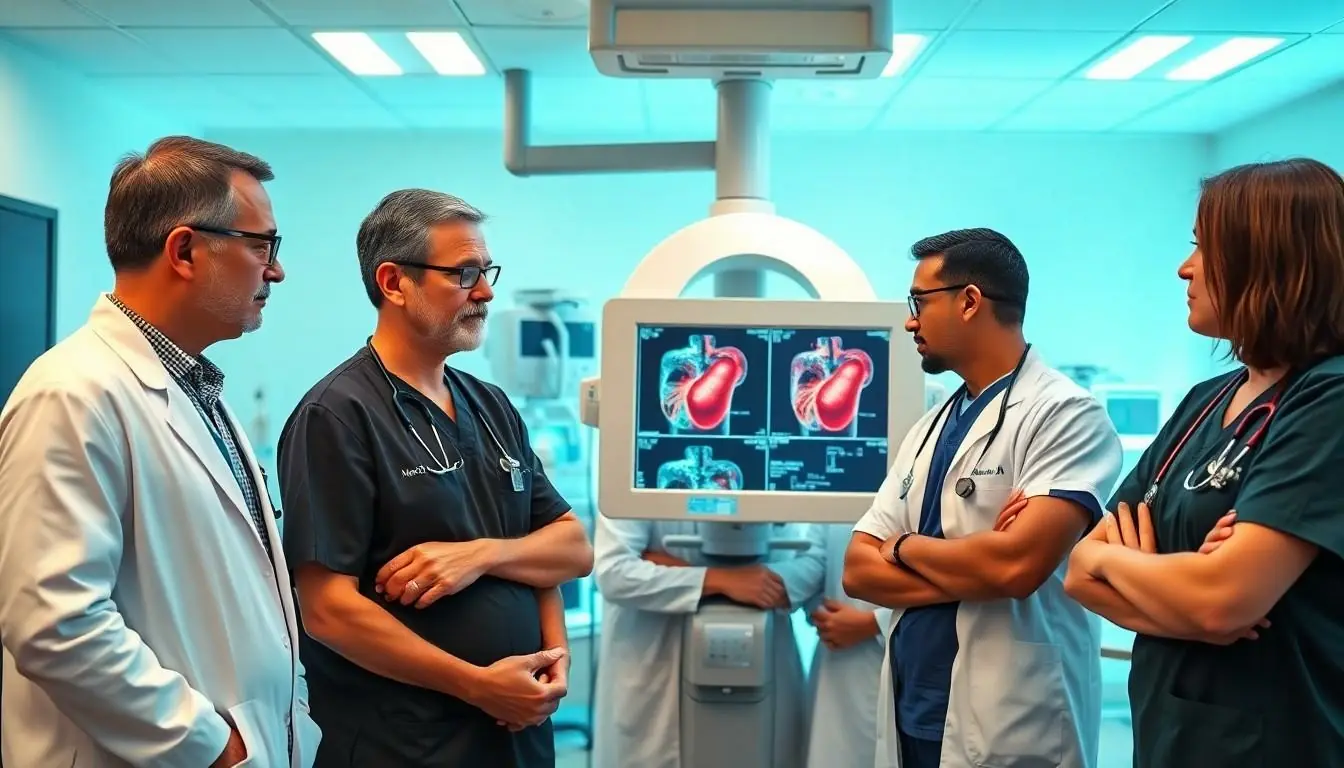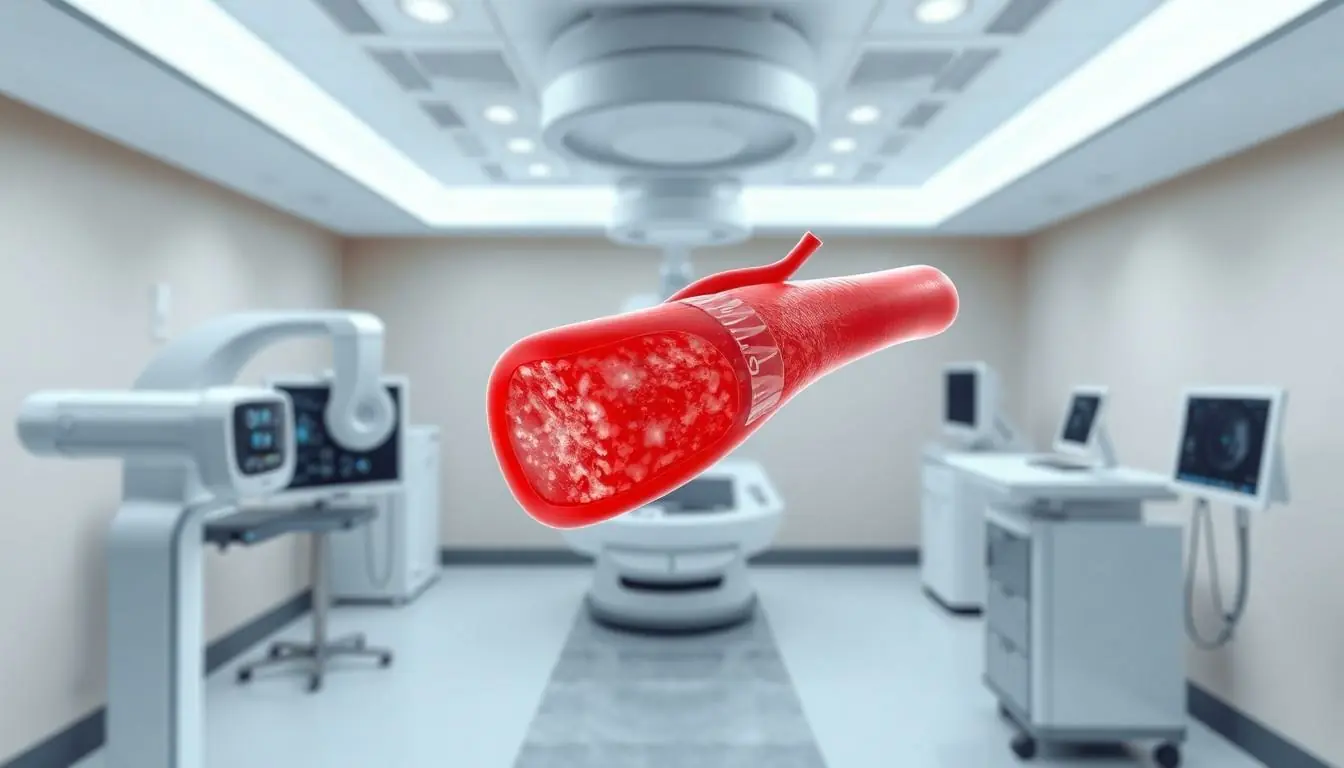In the complex world of cardiology abbreviations CTO stands for Chronic Total Occlusion – a complete blockage of a coronary artery that’s been present for at least three months. While it might sound like medical jargon straight out of a Grey’s Anatomy episode this condition affects millions of patients worldwide.
Understanding CTOs isn’t just a matter of memorizing another medical acronym. These stubborn arterial blockages present unique challenges for both patients and their healthcare providers often requiring specialized treatment approaches. As cardiovascular medicine continues to evolve innovative techniques and technologies have emerged to tackle these particularly challenging cases making what was once considered untreatable now manageable with modern interventions.
Table of Contents
ToggleUnderstanding CTO in Cardiology
Chronic Total Occlusion (CTO) represents a complex cardiovascular condition requiring specialized interventional approaches. Its comprehensive understanding enables cardiologists to develop effective treatment strategies for patients with coronary artery disease.
Chronic Total Occlusion Defined
A Chronic Total Occlusion occurs when a coronary artery experiences 100% blockage for 3+ months. The blockage consists of dense fibrous tissue mixed with calcium deposits forming a plug within the artery. Medical imaging reveals specific characteristics: a tapering stump at the proximal end, collateral vessels developing around the blockage site, and calcification patterns visible on angiography. CTOs develop gradually through progressive atherosclerotic plaque buildup combined with repeated episodes of plaque rupture and healing.
Clinical Significance of CTOs
CTOs impact 15-30% of patients undergoing coronary angiography. These occlusions reduce blood flow to heart muscle tissue causing symptoms like:
- Chronic chest pain during physical activities
- Shortness of breath with minimal exertion
- Decreased exercise tolerance
- Frequent episodes of angina
| CTO Impact Metrics | Percentage |
|---|---|
| Prevalence in CAD patients | 15-30% |
| Success rate of PCI | 85-90% |
| Symptom improvement post-treatment | 75-80% |
| Risk of complications | 2-3% |
Successful CTO treatment improves left ventricular function, reduces angina frequency and enhances quality of life scores in treated patients.
Diagnosis and Assessment of CTOs
Accurate diagnosis of Chronic Total Occlusions relies on comprehensive cardiac imaging techniques. Medical professionals use specific diagnostic criteria combined with advanced imaging technologies to evaluate CTO characteristics essential for treatment planning.
Angiographic Characteristics
Coronary angiography reveals distinct features that identify CTOs with 98% accuracy. The primary indicators include a tapered stump at the proximal cap, visible collateral vessels bridging the occlusion site, and characteristic calcification patterns along the vessel wall. CTOs display TIMI (Thrombolysis In Myocardial Infarction) flow grade 0 with an estimated duration exceeding three months. Additional markers include:
- Bridge collaterals forming alternative blood flow pathways
- Microchannels within the occluded segment
- Vessel calcification patterns indicating chronicity
- Distal vessel opacification through retrograde filling
- Blunt or tapered proximal cap morphology
Advanced Imaging Techniques
Modern cardiac imaging combines multiple modalities to assess CTO complexity. Computed Tomography Angiography (CTA) provides detailed 3D visualization of occlusion length calcification patterns vessel tortuosity. Intravascular ultrasound (IVUS) generates cross-sectional images revealing:
- Plaque composition analysis
- True vessel dimensions
- Entry point identification
- Calcium distribution mapping
- Guide wire position verification
Optical Coherence Tomography (OCT) offers superior resolution for evaluating vessel microstructure with 10-fold higher resolution than IVUS. These imaging methods create detailed roadmaps for interventional procedures enabling precise procedural planning.
Treatment Options for CTO
Treatment options for Chronic Total Occlusion focus on restoring blood flow to the affected heart muscle through specialized approaches. The selection of treatment methods depends on factors including lesion characteristics clinical symptoms vessel anatomy patient comorbidities.
Medical Management Strategies
Medical therapy forms the cornerstone of CTO management incorporating antiplatelet medications statins beta blockers ACE inhibitors. Dual antiplatelet therapy combining aspirin with P2Y12 inhibitors reduces the risk of thrombotic events. Statins play a crucial role in stabilizing atherosclerotic plaques lowering cholesterol levels. Beta blockers decrease myocardial oxygen demand improving angina symptoms. ACE inhibitors help control blood pressure support cardiac remodeling. Regular monitoring of medication effectiveness adjustment of dosages ensures optimal therapeutic outcomes.
Interventional Procedures
Percutaneous Coronary Intervention (PCI) represents the primary interventional approach for CTO treatment utilizing specialized techniques equipment.
| Technique | Success Rate | Recovery Time |
|---|---|---|
| Antegrade Wire Escalation | 65-75% | 2-3 days |
| Retrograde Approach | 85-90% | 3-5 days |
| Hybrid Procedure | 90-95% | 4-7 days |
Advanced crossing techniques include parallel wire techniques dissection reentry methods hybrid approaches. Intravascular imaging guidance enhances procedural success rates reduces complications. Modern CTO PCI procedures achieve technical success rates exceeding 85% in experienced centers. Post-procedure care involves careful monitoring anticoagulation management rehabilitation protocols.
CTO Revascularization Techniques
Chronic Total Occlusion revascularization employs specialized techniques to restore blood flow through completely blocked coronary arteries. Modern approaches incorporate advanced wire manipulation strategies combined with specialized equipment to achieve optimal results.
Antegrade Approach
The antegrade approach represents the most common method for CTO revascularization, entering through the blocked artery’s front end. Operators use specialized guidewires with varying stiffness levels to cross the occlusion, starting with softer wires for microchannels. The wire escalation technique progresses from soft to stiff wires based on lesion resistance. Parallel wire techniques allow operators to maintain a reference wire while manipulating a second wire through the true lumen. Advanced crossing devices like the CrossBoss catheter enable controlled penetration through resistant lesions when conventional wires fail. Success rates for antegrade approaches reach 85% in experienced centers utilizing contemporary techniques.
Retrograde Approach
Retrograde techniques access the CTO through collateral vessels when antegrade methods prove unsuccessful. Operators advance wires through septal or epicardial collateral channels to reach the distal end of the occlusion. The reverse CART technique creates a controlled subintimal space where antegrade and retrograde wires meet. Specialized microcatheters support wire manipulation through tortuous collateral vessels. Success rates for retrograde approaches reach 90% in complex cases where antegrade techniques fail. Modern hybrid algorithms combine both approaches strategically based on specific anatomical features. Experienced operators achieve optimal outcomes by switching between techniques during the same procedure when necessary.
Outcomes and Success Rates
Modern CTO interventions demonstrate significant success rates, with experienced centers reporting procedural success exceeding 85% in selected cases. Technical advancements and operator expertise contribute to improved patient outcomes across various treatment approaches.
Procedural Success Factors
Several key elements determine successful CTO interventions:
- Operator experience correlates directly with success rates, showing 15-20% higher success for physicians performing 50+ cases annually
- Lesion characteristics impact outcomes:
| Factor | Success Rate Impact |
|——–|——————-|
| Lesion length <20mm | 90-95% success |
| Heavy calcification | 70-75% success |
| Good collaterals | 85-90% success |
Advanced imaging guidance using IVUS increases procedural success by 10-15%. Contemporary hybrid approaches combining antegrade and retrograde techniques achieve 90% success in complex cases when implemented by experienced operators.
Long-term Patient Benefits
CTO revascularization produces measurable improvements in patient outcomes:
- Angina relief occurs in 75-80% of successful cases within 3 months
- Left ventricular function improves by 4-7% in treated patients
- Exercise capacity increases by 30-40% post-procedure
Clinical data demonstrates:
| Outcome | Percentage |
|---|---|
| 5-year survival rate | 89.5% |
| Freedom from major cardiac events | 84.2% |
| Quality of life improvement | 85-90% |
Successful CTO interventions reduce the need for bypass surgery by 60% compared to medical therapy alone. Patients report significant symptom improvement with 90% experiencing reduced chest pain frequency.
Conclusion
Modern advancements in CTO treatment have revolutionized cardiac care offering hope to millions affected by this challenging condition. The combination of sophisticated imaging techniques advanced procedural methods and experienced healthcare providers has transformed CTO interventions into highly successful treatments.
With success rates reaching up to 95% in optimal conditions and significant improvements in patient outcomes CTO procedures have become a cornerstone of contemporary cardiology. The remarkable progress in treating these complex blockages demonstrates how far cardiovascular medicine has come in providing effective solutions for what was once considered an untreatable condition.
Patients can now look forward to improved quality of life reduced symptoms and better long-term survival rates thanks to these innovative therapeutic approaches.





